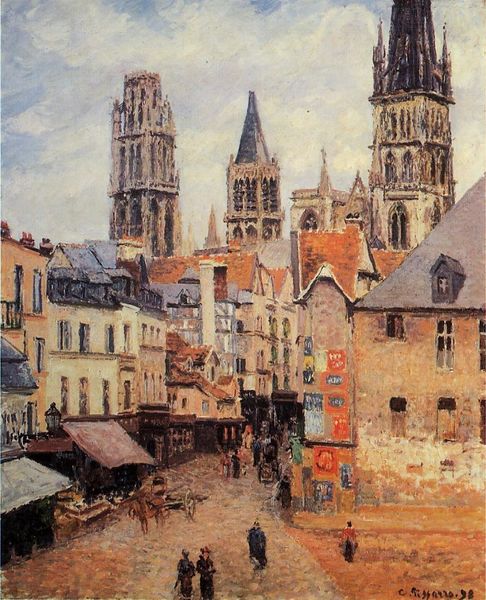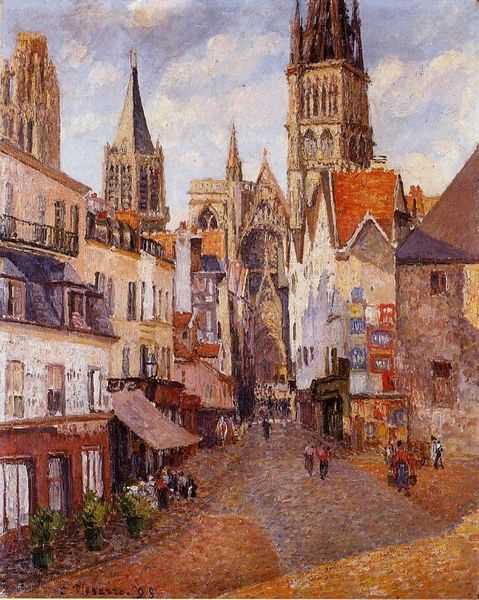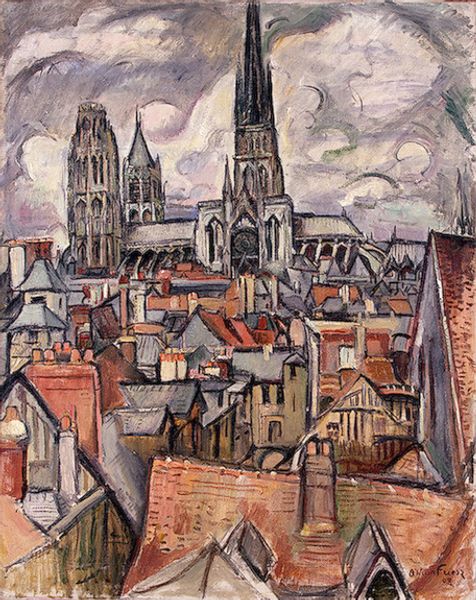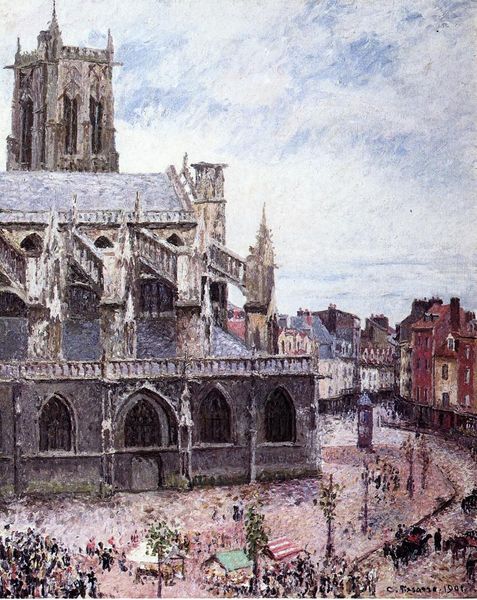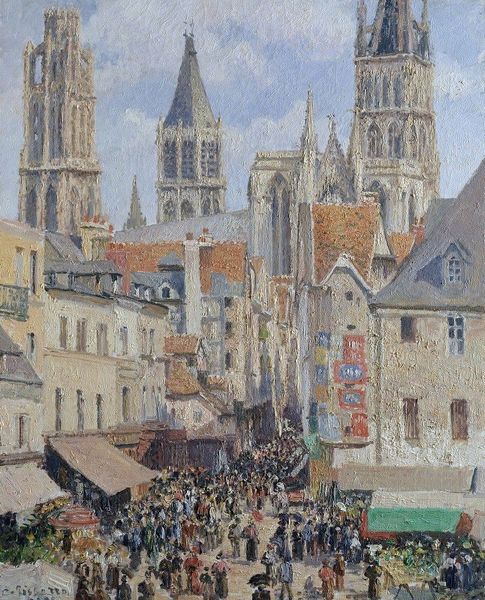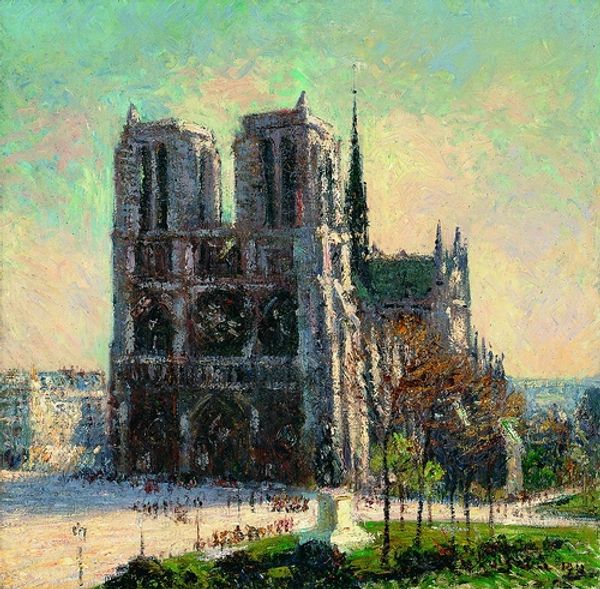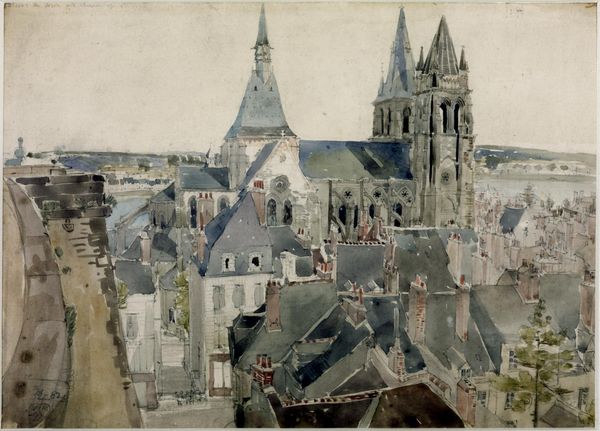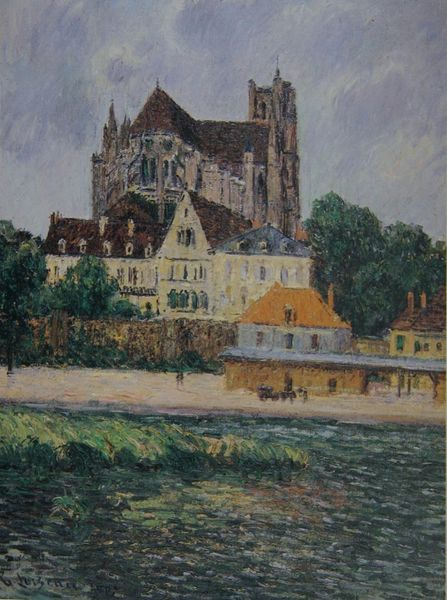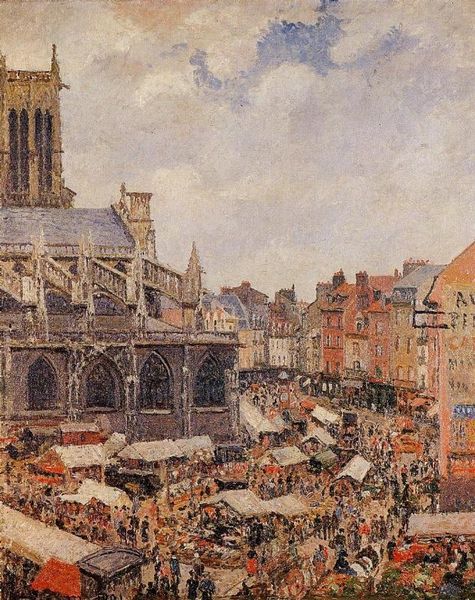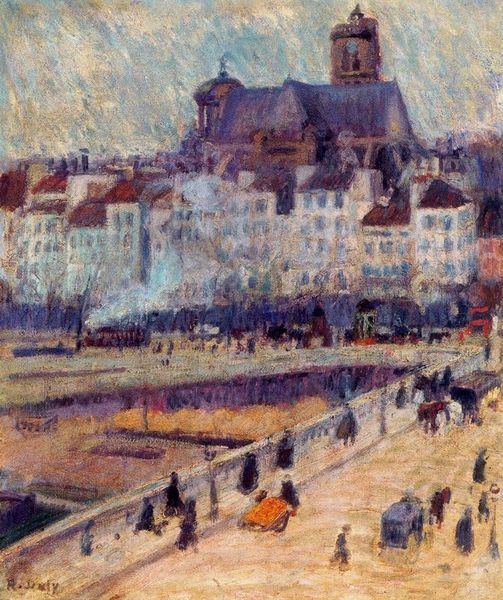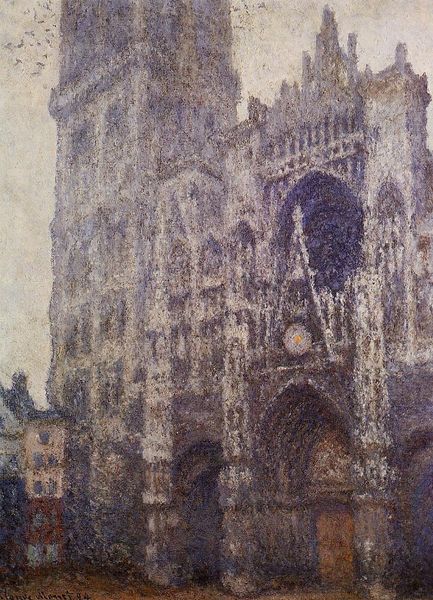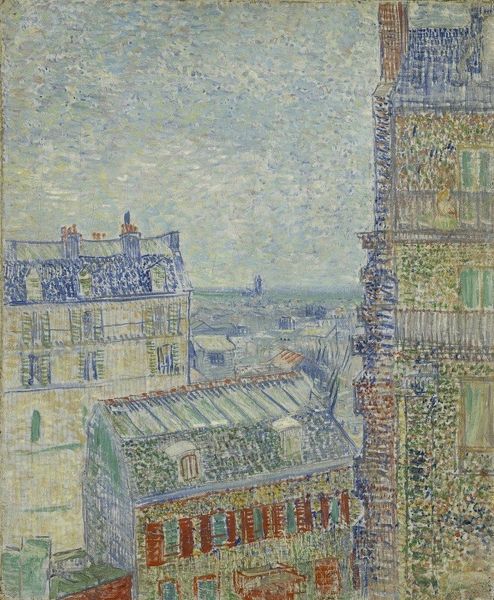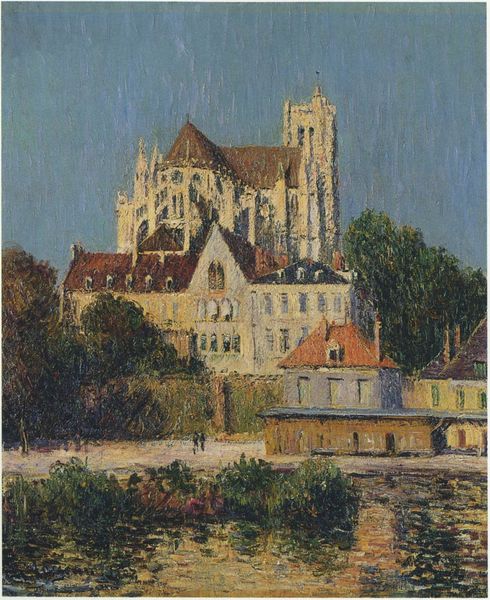
Dimensions: 72.3 x 91.4 cm
Copyright: Public domain
Editor: We are looking at Camille Pissarro’s "The Roofs of Old Rouen, Grey Weather," painted in 1896 with oil on canvas. The overall effect is, to me, quite muted, with a concentration on the textural differences between the rooftops and the imposing architecture behind them. What draws your eye as you observe this work? Curator: The orchestration of form, most notably the contrast between the angular rooftops and the verticality of the cathedral. Pissarro’s application of paint, broken and divided, creates a tapestry-like effect. Observe how each stroke exists almost independently, yet contributes to the cohesive whole. Do you see the semiotic relationship at play between these individual parts and the total impression of the artwork? Editor: I do. It’s almost as though the individual strokes mirror the individual bricks and tiles of the buildings themselves, all forming a larger structure. Is there significance to this visual language of discrete components? Curator: Precisely. The very materiality of the paint is foregrounded. Note how Pissarro dispenses with smooth gradations and instead embraces a certain optical mixing. It directs our gaze to the process of constructing the image rather than merely representing a scene. It's a negotiation between representation and abstraction. How does this emphasis on the process affect your interpretation of the depicted subject, the Rouen cityscape? Editor: I think it emphasizes the artist's presence, his active role in selecting, composing, and rendering. The city feels less like a detached view and more like a constructed vision. Thank you, I can now appreciate the painting at a new level. Curator: And I've reconsidered the role of process through your insights—a valuable exchange!
Comments
No comments
Be the first to comment and join the conversation on the ultimate creative platform.
